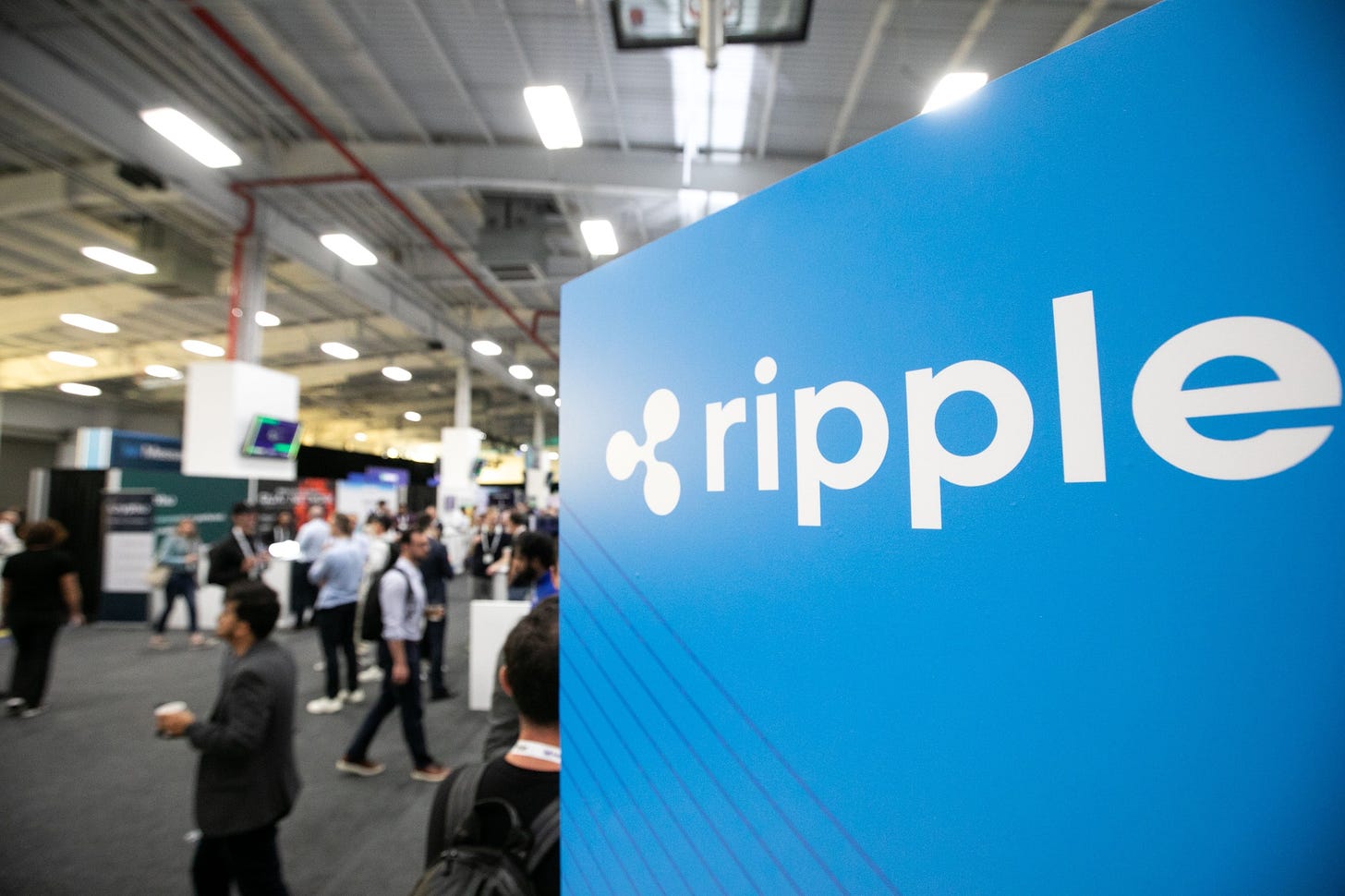- Blockletter
- Posts
- Ripple Introduces Stablecoin Tied to U.S. Dollar on XRP Ledger
Ripple Introduces Stablecoin Tied to U.S. Dollar on XRP Ledger
Unlocking Stability: Ripple's Revolutionary Stablecoin Initiative Set to Transform the Crypto Landscape with Transparency, Compliance, and Market Growth Potential

Ripple, the architect behind the XRP Ledger, is stepping into the stablecoin arena, challenging incumbents like Tether and USDC. The company has announced plans for a stablecoin linked to the U.S. dollar, stating it will be fully backed by U.S. dollar deposits, short-term U.S. government Treasuries, and similar cash equivalents.
According to Ripple, the stablecoin market is currently valued at over $150 billion and is projected to exceed $2.8 trillion by 2028. This move underscores the growing demand for stablecoins that offer reliability, stability, and practicality.
Scheduled for release later this year, the token will initially operate on Ripple's institutional-focused XRP Ledger and Ethereum blockchain, leveraging Ethereum's ERC-20 token standard.
Embracing Stability Amidst Crypto Volatility
Stablecoins have gained immense popularity among crypto traders due to their immunity, in theory, from the price volatility witnessed in major cryptocurrencies like bitcoin and Ethereum's ether.
David Schwartz, Ripple's CTO, highlighted the distinguishing factor of their stablecoin, emphasizing its solid backing in dollars and Treasuries. He affirmed Ripple's long-term commitment to market penetration rather than solely focusing on maximizing profit margins.

Despite ongoing legal battles with the U.S. Securities and Exchange Commission, Ripple's decision to venture into stablecoins is driven by pragmatic considerations. Schwartz cited the lucrative nature of the market as a key motivator, likening it to a bank capitalizing on business opportunities, albeit without interest payments.
Elevating Decentralized Finance with Transparency
Schwartz highlighted the potential of the new stablecoin to invigorate the decentralized finance ecosystem of the XRP Ledger, which, despite possessing a decentralized exchange, currently experiences lower utilization compared to other blockchain networks.
Transparency, historically a contentious issue for stablecoin providers, will be a central focus for Ripple as it introduces its stablecoin. Schwartz emphasized the company's commitment to regular public audits, potentially conducted by a reputable accounting firm, with further details to be disclosed later. He stressed the importance of complete transparency, indicating a willingness to address any concerns.
Moreover, Schwartz pointed out that the substantial growth of the stablecoin market, dominated by Tether's USDT and Circle's USDC, acts as a deterrent against dishonest practices by Ripple or any other stablecoin issuer. Reflecting on the evolution of perceptions towards Tether, he noted the market's maturation, making it illogical for established players to jeopardize their standing.
Catering to Enterprise Clients and Institutions
Ripple's stablecoin is primarily tailored for enterprise clients and financial institutions, who prioritize transparency and compliance due to obligations to stakeholders and regulators. To meet the standards of this market segment, Ripple is leveraging U.S. banks to hold reserves and adopting a "compliance-first mindset."

While USDC leads the compliance-focused stablecoin market, Schwartz dismissed the notion of a winner-takes-all scenario, expressing contentment with being a solid third player in a significantly expanding market. He emphasized the potential for substantial growth, suggesting that even being a strong contender amidst such growth would constitute success for Ripple.
The Future of Ripple's Stablecoin
The launch of Ripple's stablecoin will be closely watched by industry observers. How it will be received by institutions and how it integrates with the XRP Ledger's DeFi ecosystem remain to be seen. Regardless, Ripple's entry signifies a growing acceptance of stablecoins and their potential to bridge the gap between traditional finance and the cryptocurrency world.